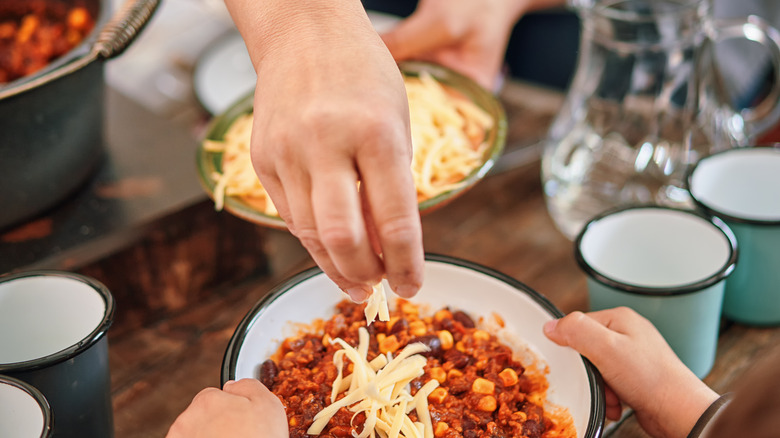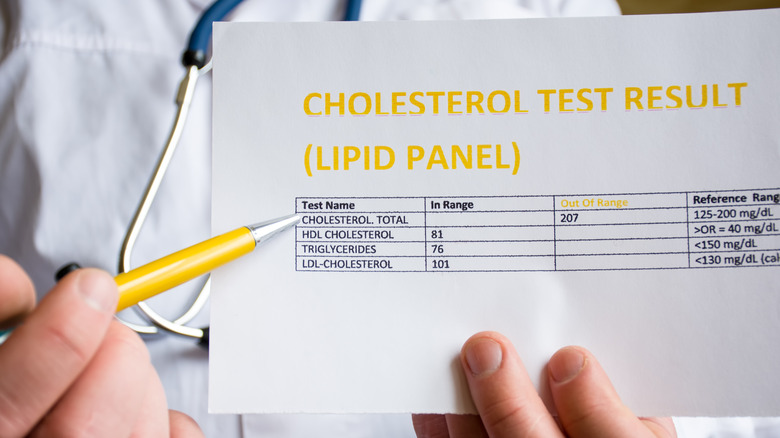Eating Kidney Beans Every Day Has An Unexpected Effect On Your Cholesterol
No beans about it: There's absolutely no reason to deny yourself a daily dose of kidney beans. Not only do kidney beans come in light and dark colors — each with a slightly unique flavor profile — but they're also highly versatile and budget-friendly cooking ingredients. Best of all, eating kidney beans every day can give you more of a health boost than you bargained for, especially if you're concerned about keeping your cholesterol at a normal level.
What gives the humble kidney bean so much power to affect cholesterol? According to Annette Snyder, MS, RD, CSOWM, LD of Top Nutrition Coaching, kidney beans are jam-packed with high-quality nutrients. "Kidney beans contain a bit less fat and saturated fat than other varieties of beans, but similar amounts of fiber and protein," the dietitian explains. "Much of the fiber is the soluble type, which can lower the amount of cholesterol absorbed in your digestive tract."
Fiber for fighting high cholesterol
How much fiber do kidney beans contain? Per nutritional data offered by the U.S. Department of Agriculture, one cup of cooked kidney beans contains 13.1 grams of fiber. Since the Cleveland Clinic recommends that most adults consume between 22 and 34 grams of fiber each day depending on their gender and age, a single serving of kidney beans could go a long way toward meeting that goal. And that's appealing, especially if you find it hard to keep your cholesterol in check.
In fact, adults who participated in a 2021 trial and ate one cup of beans for four weeks were able to lower their cholesterol numbers. The study, which was published in The Journal of Nutrition, provided compelling evidence to support the theory that consuming beans every day could effectively reduce both "bad" cholesterol (low-density lipoprotein or LDL) and overall cholesterol.
Of course, you might want to reach for the darkest color of kidney bean to get the biggest impact. Another 2021 study, published in Nutrition, Metabolism and Cardiovascular Diseases, explored the relatively immediate vascular effects on humans of eating three-quarters of a cup of black, pinto, navy, or kidney beans versus eating the same amount of rice. The authors found that the darker the bean color, the more positive the bean's effect was on vascular responses.
Beans belong in the cholesterol-friendly kitchen
So, what's the simplest way to bring kidney beans into your diet, particularly if you're unaccustomed to eating a lot of beans each day?
Annette Snyder is a big proponent of swapping beans for meat. "Kidney beans can be used in place of animal proteins with high levels of saturated fat and cholesterol," she says. "Beans work well in stews and soups, like chili. They're also great in cold salads with other beans, corn, and other chopped veggies combined with Mediterranean or Tex-Mex type flavors."
Although raw beans tend to be priced lower than canned beans, they take a long time to soak. If you'd rather not take the effort to prep your beans, go ahead and use the canned varieties. However, Snyder suggests looking at the ingredient label first. Some canned beans are soaking in a salt-based brine. Instead of consuming tons of extra sodium, rinse salty kidney beans thoroughly before incorporating them into your recipes.


